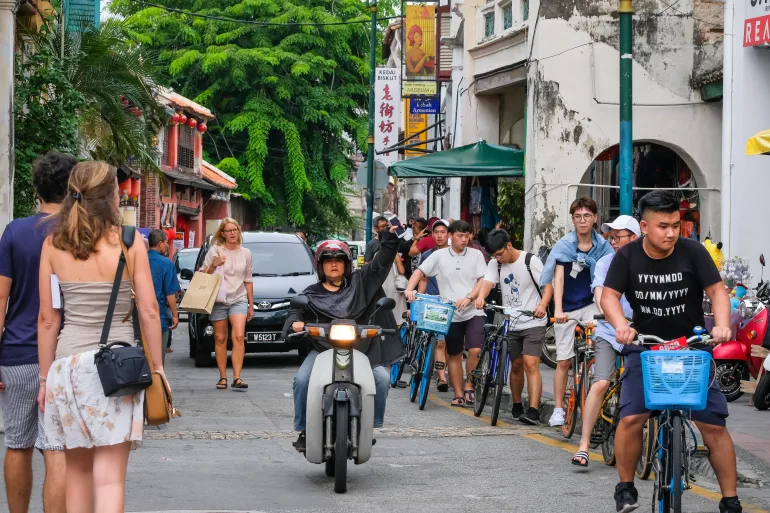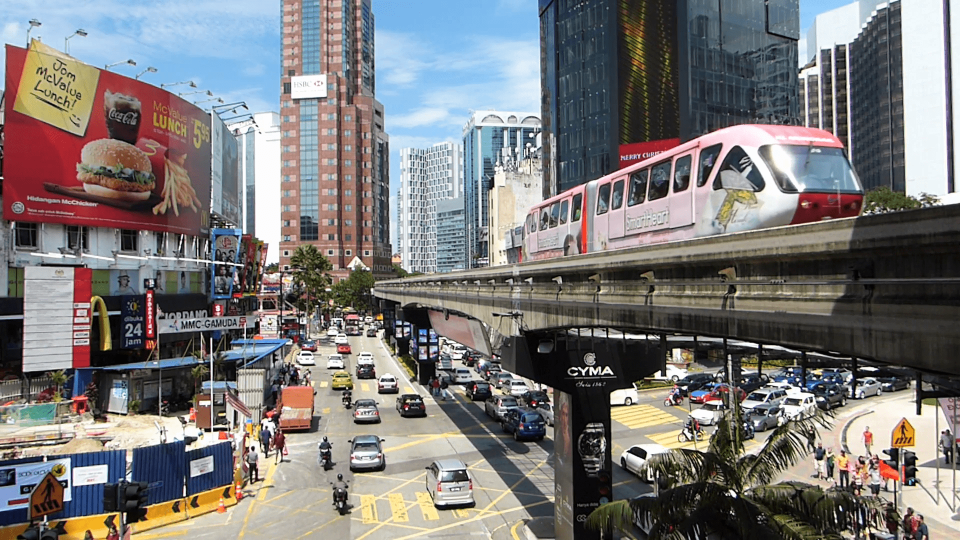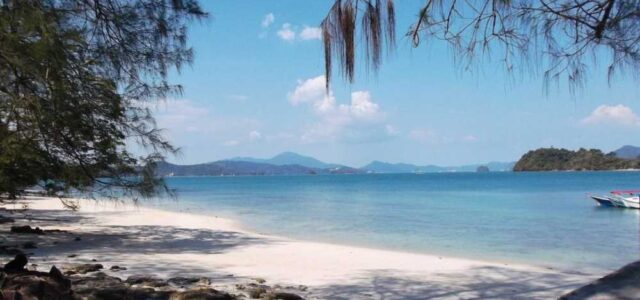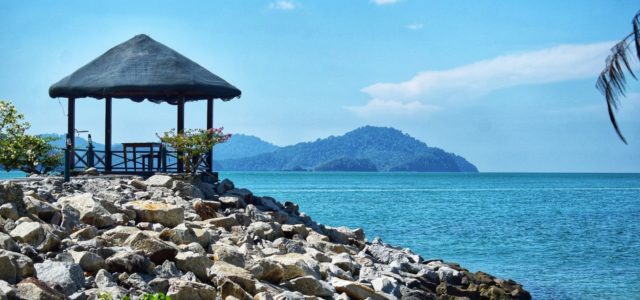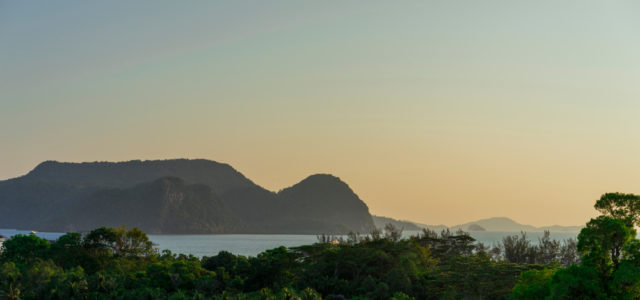Malaysia Travel Guide 2023: Everything You Need to Know When Travelling to Malaysia
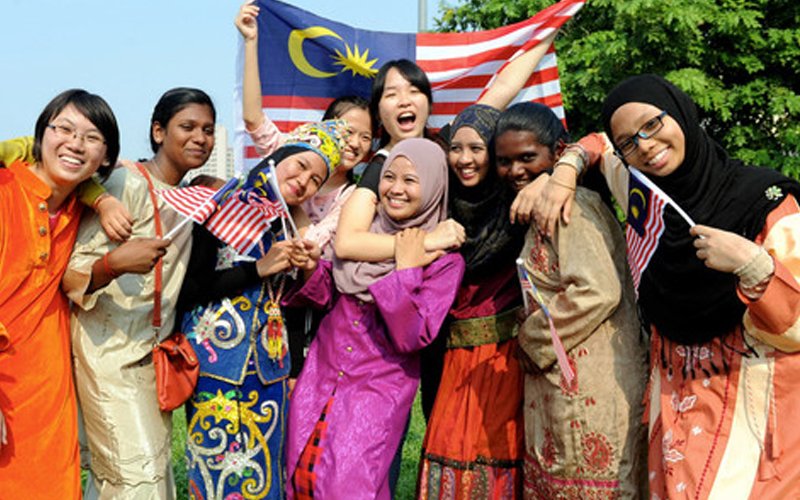
Filled with a blend of Malays, Chinese, Indians and indigenous groups, Malaysia boasts a rich cultural heritage, ranging from a plethora of annual festivals and scrumptious cuisines, to traditional architecture and rural crafts. Malaysia has plenty of alluring natural beauty to take in too, this includes pristine beaches and some of the world’s oldest tropical rainforests, many of which are accessible to tourists. Malaysia’s national parks are top-rate for trekking and wildlife-watching, and sometimes for cave exploration and river rafting.
Being part of the Malay archipelago, which stretches from Indonesia and all the way to the Philippines, Malaysia has become a vital port of call on the trade route between the early world’s two greatest markets—India and China.
As a matter of fact, Malaysia has only existed since 1963, when the federation of the eleven Peninsula states was joined by Singapore and two Bornean territories of Sarawak and Sabah. In 1965, Singapore left the union to become an independent country.
In the present day, the dominant cultural force in the country is Islam, a religion adopted by the Malays in the fourteenth century. Besides, there are also significant Buddhist, Christian and Hindu minorities who often provide surprising juxtapositions of mosques, temples, churches and quills.
Plus, the colour and verve of Chinese temples and street fairs, Indian festivals and everyday life in Malay villages, as well as the indigenous traditions of Borneo, it’s easy to see why foreign tourists are exceptionally drawn into this melting pot.

Table of Contents
Facts About Malaysia You May or May Not Know
- Home to 33.41 million inhabitants (as of January 9, 2023), Malaysia is divided into two distinct regions. Peninsular Malaysia, where the capital, Kuala Lumpur, is situated, is separated by over 600 km of the South China Sea from East Malaysia, comprising the states of Sarawak and Sabah on the very island of Borneo. Both regions are essentially one sea apart from each other.
- Malaysia is a British-style parliamentary democracy, consisting of a ceremonial head of state known as the Yang di-Pertuan Agung (the post will rotate amongst the sultans from each state of the federation).
- Rafflesia, or the world’s largest flower, is a Malaysian rainforest plant that measures a metre across and smells of rotten meat. It’s named after the naturalist and founder of Singapore, Sir Stamford Raffles.
- Historically dominated by agriculture and mining, Malaysia’s economy now features a healthy manufacturing sector.
Where to Go in Malaysia
a. Kuala Lumpur
Malaysia’s capital city, Kuala Lumpur (locally referred to as KL), is the social and economic driving force of a nation eager for its own betterment, a fact apparent in the relentless proliferation of air-conditioned shopping malls, top-rated bars and restaurants in the city, and in the continuing sprawl of suburbia and industry surrounding it. However, KL is also strongly rooted in tradition, whereby the same Malay executives who go to work in traditional clothing at festival times, and roadside food stalls and markets are surrounded by high-rise hotels, bank towers and skyscrapers, especially in older towns such as Chinatown and Little India.
b. Malacca
Only a couple of hours’ drive south of the capital spots the birthplace of Malay civilization, Malacca, whose astonishing historical architecture and vibrant atmosphere make it a must on anybody’s travel itinerary.
c. Penang
Much further up the west coast lies the island of Penang—the site of the first British settlement in Malaysia. Georgetown, its capital, still features beautifully preserved and restored colonial buildings and a mellow Chinatown district, and is, along with Melaka, recognised for its cultural and architectural diversity as a UNESCO World Heritage Site.
d. Cameron Highlands
If you want a taste of Old England, head for the hill stations of Cameron Highlands where cooler temperatures and lush countryside provide endless opportunities for walks, birdwatching, golfing and sipping on cream teas.
e. Alor Star
North of Penang, Malay traditions hold sway at Alor Star, the last major town before the Thai border. This far north, the prime tourist destination is Pulau Langkawi, an island with international-calibre resorts and picturesque beaches. Here are 10 reasons why you need to visit Langkawi.
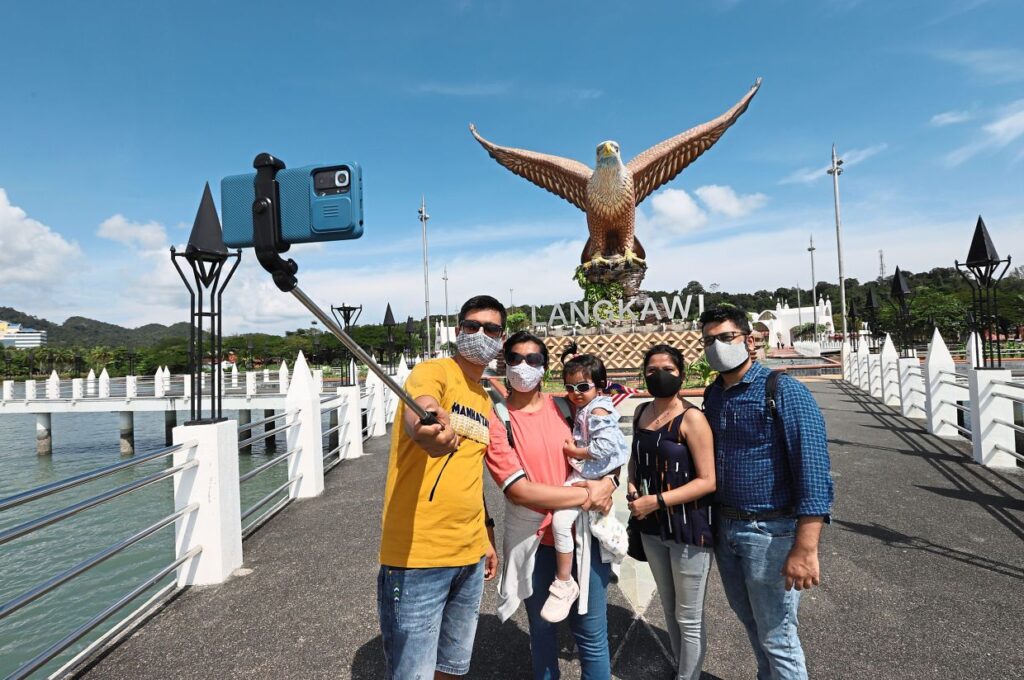
f. The East Coast
The Peninsula’s east coast is rather rural and serene, filled with rustic villages and astounding islands such as Pulau Perhentian and Pulau Tioman, a hotspot for backpackers and tourists alike. The state capitals of Kota Bharu, close to the northeastern Thai border, and Kuala Terengganu, further south, highlight Malay traditions at its finest, featuring craft production and performing arts.
g. Taman Negara
Traversing the Peninsula’s mountainous interior either by land or rail allows you to enjoy the magnificent tropical rainforests of Taman Negara. The national park’s 4000 square kilometres are interesting enough to keep you occupied for days: trails, animal-watching, aerial forest-canopy walkways, limestone caves, waterfalls, and so on and so forth. Here you will be welcomed by the Orang Asli, the Peninsula’s indigenous peoples, a few of whom still cling to a semi-nomadic lifestyle within the park.
h. Sarawak and Sabah
Across the sea from the Peninsula is where the east Malaysian states of Sarawak and Sabah are situated. The first taste of Sarawak comes at Kuching, the old colonial capital, and then the Iban longhouses of the Batang Ai river system. Much further north on the Ranjang River, Sibu acts as the starting point for trips to the less touristy Iban, Kayan and Kenyah longhouses. In the north, Gunung Mulu National Park is the main destination; many frequent here to climb up to view its extraordinary limestone Pinnacles, though spectacular caves also burrow into the park’s mountains. More remote is the Kelabit Highlands, further east, where the mountain air is refreshing and with endless opportunities to trek.
The reason why you should add Sabah in your itinerary is that you can conquer the 4095m granite peak of Mount Kinabalu, set in its own national park, though the vibrant modern capital Kota Kinabalu and its pristine offshore islands, Gaya and Manukan, have their unique appeals, too. On top of this, Sabah is worth visiting for its exhaustive wildlife: turtles, orang-utans, proboscis monkeys and hornbills are only a few of the exotic inhabitants of the jungle and bountiful islands. The far east at Pulau Sipadan is full of marine attractions, featuring a host of sharks, other fish and turtles whereas neighbouring Pulau Mabul boasts hip, but often pricey, diving resorts.
Check out things to do in Malaysia for more details.
Outdoor Activities in Malaysia that’ll Keep You Entertained for Days
Boasting some of the world’s oldest tropical rainforests, beaches and islands, trekking, snorkelling and scuba diving have since become common pursuits in Malaysia. You can find plenty of established resorts on the island of Penang, Tioman, and Langkawi who offer jet skiing and parasailing, making them a hot spot for nature lovers.
Langkawi’s private day resort—Paradise 101 offers bountiful water sport activities at competitive rates, including but not limited to jet skiing, parasailing, banana boat, aqua park, kayaking, together with other adrenaline-rushing outdoor activities such as zip lining across the mighty jungle and grooving beneath the gleaming stars at their OMG Bar. Bid a temporary fond adieu to the hustle and bustle of urban life, and take one step closer to nature as you indulge in Paradise 101’s all-inclusive Langkawi tour packages.
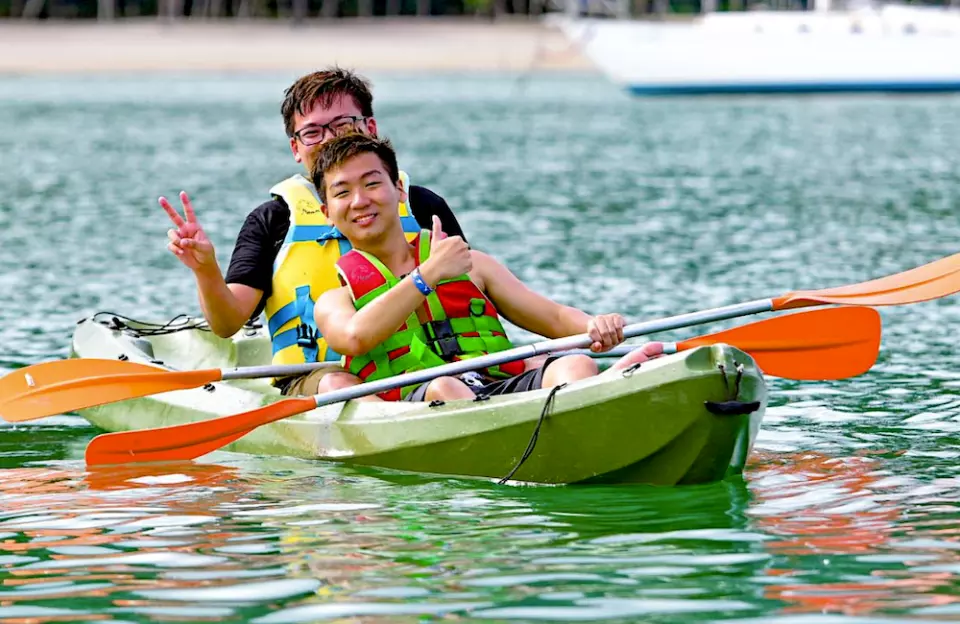
a. Snorkelling, diving and windsurfing
The crystal-clear waters and plentiful tropical, marine life and coral of Malaysia are what make snorkelling and diving a must-do activity, this is especially when you’re an underwater enthusiast. You can experience this in Sabah’s Sipadan Island Marine reserve and the Peninsula’s east coast, with islands such as the Perhentians, Redang, Kapas and Tioman.
Enrol yourself in diving courses. Sabah’s Kota Kinabalu and Sarawak’s Miri for instance, offer some of the most wholesome internationally recognised certification courses, featuring a beginner’s open-water course (around RM1,300), to the dive-master certificate (RM 2,200). If you’re already a qualified diver, you can proceed to pay RM180 per day for dive trips that include gear rental.
Many beachside guest houses rent snorkelling equipment for about RM20 per day. Some well-known snorkelling spots mark out lanes for motorboats with buoy lines—remember to stay on the correct side of the line to avoid unwanted accidents. Always seek local advice if you’re not sure which river or sea to swim or snorkel. Stay away from corals if you want to avoid irreparable damage such as the armour-piercing spines of sea urchins or a painful encounter with the fire coral.
You can experience windsurfing in Cherating. Its expansive, open bay and shallow water provide near-ideal conditions during the northeast monsoon season.
b. Whitewater Rafting
Whitewater rafting has become a mainstream activity on Sabah’s Sungai Padas which runs through the spectacular Padas Gorge. If you’re planning to raft in Peninsular Malaysia, we recommend that you go with an operator that’ll cost you around RM250, including equipment.
c. Jungle Trekking
If you’ve been dreaming of jungle trekking through the mighty jungles of Malaysia, Taman Negara is probably the best place to begin. The national park boasts an impressive range of walks, many of which can be done without a guide, while Bako National Park in southwest Sarawak offers easy, day-long hikes.
In contrast, if you’re an expert, Gunung Mulu, Sarawak, should offer you sufficient challenges whereas Sabah’s Maliau Basin is a highly demanded trekking destination. The largely inaccessible Endau-Rompin Park in the south of Peninsular Malaysia is exclusively for serious expeditions only. Taking jungle trekking to another level, we have Mount Kinabalu in Sabah—the hike to the top of its mountain is a demanding but a highly rewarding combination of trekking and climbing.
Wildlife in Malaysia
Peninsular Malaysia and Borneo are known for being a paradise for wildlife-enthusiasts, harbouring over 600 types of birds and 200 mammal species—this includes Asian elephants, sun bears, tigers, tapirs, barking deer, gibbons, hornbills as well as pythons. Other wildlife you will stumble upon are the nose-drooping proboscis monkey, orang-utans, white-tip sharks, clown fish and barracuda, not to mention the green and hawksbill turtles, which lay their eggs by night ashore in season.
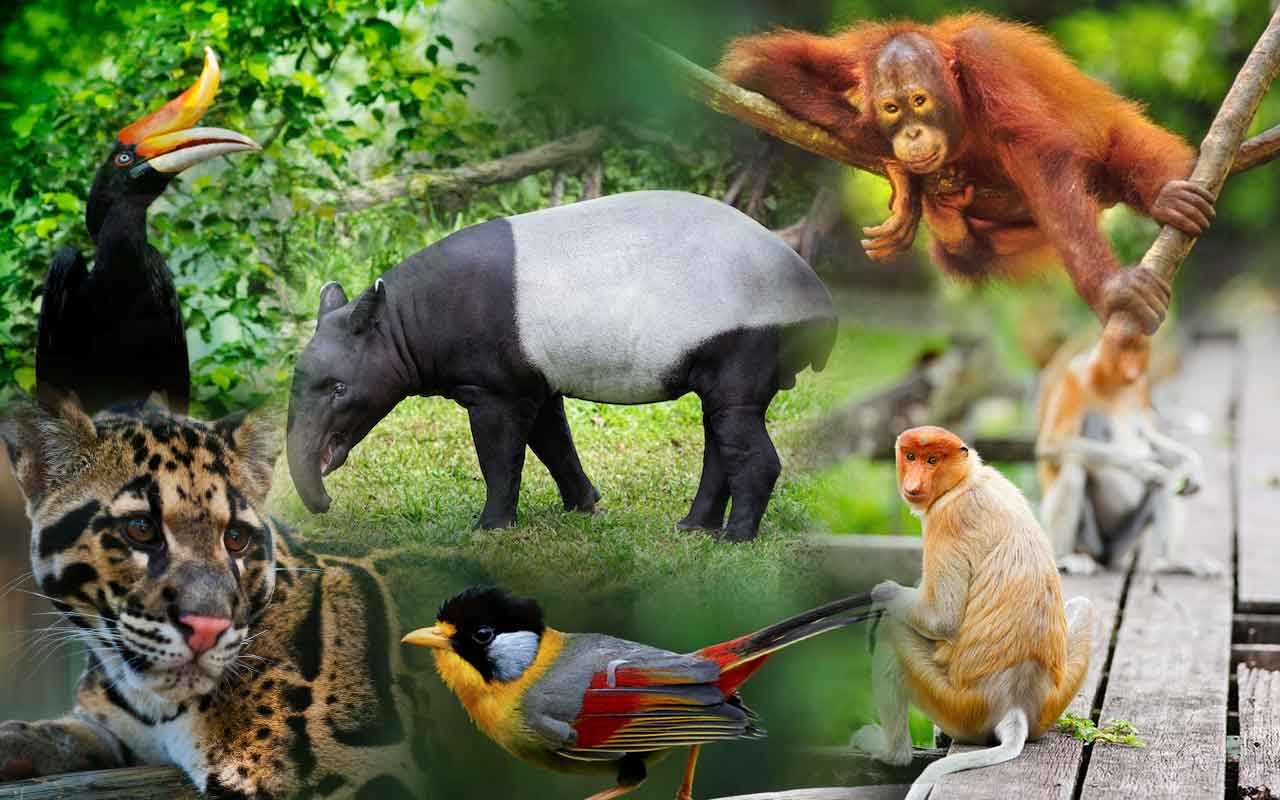
Malaysia Travel Guide: How to Save Money
A little typically goes a long way in Malaysia, but it’s still easy to exceed your budget here if you splurge on lavish meals and tours. Here are some money-saving tips you can follow in Malaysia:
- Use Grab – E-hailing service Grab is just like Uber, much often cheaper than taxis, especially if you’re getting a ride from any airports in Malaysia. Just download the app and you’re set to book your cab!
- Eat street food – Street stalls are where you can get a taste of Malaysia’s authentic, local flavours. The best thing about these hawker food and meals is that it’ll only cost you a few bucks.
- Drink moderately – As Islam being Malaysia’s official religion, drinking is basically frowned upon, but pubs and bars are still widely available. To restrict it, the authorities have made drinking very expensive. So if you really want some booze, take it moderately so it doesn’t wreck your budget.
- Travel during off-season – Traveling during the monsoon season (late November to mid-February) is one of the ways to save money on flights and accommodation. With significantly fewer visitors, this also means that everything is cheaper. To stay away from the worst of rains, skip the east coast.
- Escape the city – Many of the popular tourist attractions in Kuala Lumpur are designed for tourists hence the high price points. We highly recommend you to skip the crowds and head to somewhere such as Langkawi, a faraway island where you get to explore clear waters, pearl white sand, and ancient rainforest idyllic in its natural beauty.
How to Get Around Malaysia
Public Transportation – Most cities in Malaysia boast an excellent public transport infrastructure, this is more prominent in Kuala Lumpur where buses, light rail, commuter rail, and monorail are connected to every part of the city. A ride will cost you anywhere from 1 MYR-15 MYR. Should you plan on mostly utilising public transport, we recommend you to pick up a Touch ‘n Go (TnG) card to use on all modes of public transportation, allowing you to save up to 20% per ride.
Bus – Buses are an easy and efficient means of transport that brings you around Malaysia. Expect to pay around 5 MY – 5 MYR per hour for a bus trip. Some of the well-known bus companies include Transnasional. Plusliner, Aeroline, SP Bumi, Mutiara Express, etc.
Train – Mainland Malaysia has 1,849 kilometres (1,149 miles) of rail, with the main line connecting Singapore to Kuala Lumpur, and all the way to Thailand.
There are two various types of service: air conditioned, express trains with three different classes as well as local trains, which are slower than the former. Both are operated by Keretapi Tanah Melayu (KTM), Malaysia’s national railway service.
Flight – The two leading domestic airlines in Malaysia are Malaysia Airlines and AirAsia. Kuala Lumpur’s two airports (KLIA and KLIA2) receive the most flight traffic, followed by Kota Kinabalu and Penang. There are also several smaller airports around the country as well, such as Langkawi International Airport, Kuantan Sultan Ahmad Shah Airport, and so on and so forth.
Best Time to Visit Malaysia
Malaysia’s two peak seasons occur from the beginning of December to the end of January, and then, from June to mid-September. The first tourist peak season occurs during Lunar New Year. Malaysia’s Chinese population celebrates by taking the week off so your travels could be disrupted if businesses are closed.
Late November to mid-February signifies the arrival of the northeast monsoon, affecting most, if not all of the east coast with heavy rainfall. September and October are considered the wettest months on the west coast, featuring downpours which can sometimes go on for hours. This is most prominent in mountainous areas such as Genting Highlands and Cameron Highlands.
Overall, the best time to visit Malaysia is from March to early November when it’s drier and less humid. To travel Malaysia right after the rainy season is actually a smart idea, as it’s still warm, the countryside embraces lush greenery and expansive waterfalls, and most importantly, tourism isn’t overly busy.
Check out the best time to visit Langkawi here.
In general, temperatures don’t fluctuate much across the country. The daily average is 22-32°C or 73-90°F, while in the hills the temperature stays on an average of 21°C or 67°F. Humidity is high all year round.
Where to Book Your Trip in Malaysia
Paradise 101 – Malaysia boasts 878 beautiful islands that are perfect for an ideal beach holiday, one of them is Langkawi. Paradise 101 offers some of the best outdoor activities there is in Langkawi, ranging from banana boat rides to jet skis, kayaking to parasailing, and so on and so forth. Whether you’re looking for an invigorating day out in the sea, or a tranquil day out by the beach, this private day resort will ensure you a tropical escape that’s second to none.
Get Your Guide – Get Your Guide is a huge online marketplace filled with tours and excursions. They provide a myriad of tour options available in cities all over the world, including sightseeing, street art lessons, and so much more!
Intrepid Travel – If you wish to do group tours with a travel guide person, opt for intrepid. They offer interesting small group tours that rely on local operators at extremely competitive rates!

